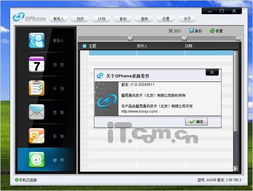Understanding OMS: A Comprehensive Guide

OMS, or Order Management System, is a crucial tool for businesses dealing with a high volume of orders. It streamlines the process of order management, from input to processing and tracking. In this article, we delve into the intricacies of OMS, its various components, and its significance in different industries.
What is an OMS?

An OMS is a software system designed to manage orders efficiently. It handles various aspects of order processing, including order input, processing, tracking, and customer service. The primary goal of an OMS is to ensure that orders are processed accurately and promptly, leading to improved customer satisfaction.
Key Components of an OMS

1. Product Information: This includes product descriptions, attributes, location, and quantity. It helps businesses manage their inventory effectively and ensure that the right products are available at the right time.
2. Available to Promise (ATP) and Procurement: ATP helps businesses determine the availability of products for customers. Procurement involves managing the supply chain and ensuring that products are available when needed.
3. Suppliers, Purchasing, and Receiving: This component focuses on managing supplier relationships, purchasing processes, and receiving goods. It ensures that businesses maintain a healthy supply chain and minimize delays.
4. Marketing (Catalog, Promotions, Pricing): This component helps businesses manage their marketing strategies, including product catalogs, promotions, and pricing. It ensures that businesses can effectively market their products to customers.
5. Customers and Prospects: This component focuses on managing customer data, including contact information, purchase history, and preferences. It helps businesses build strong customer relationships and improve customer satisfaction.
6. Order Input and Customer Service (including Returns and Refunds): This component handles order input, processing, and customer service. It ensures that customers receive timely and accurate information regarding their orders and can easily return or refund products if needed.
7. Financial Processing (Credit Cards, Invoices, Account Payments): This component manages financial transactions, including credit card processing, invoicing, and account payments. It ensures that businesses can manage their finances effectively and efficiently.
8. Order Processing (Selection, Printing, Picking, Packaging, Shipping): This component focuses on the physical aspects of order processing, including selecting products, printing labels, picking items, packaging orders, and shipping them to customers.
OMS in Different Industries
OMS is used in various industries, each with its unique requirements and challenges. Here are a few examples:
| Industry | Key Challenges | OMS Solutions |
|---|---|---|
| Retail | Managing inventory, handling returns, and ensuring timely delivery | Efficient inventory management, streamlined returns process, and real-time tracking |
| Manufacturing | Coordinating production schedules, managing supply chain, and ensuring quality control | Production scheduling tools, supply chain management, and quality control systems |
| E-commerce | Handling high order volumes, managing multiple channels, and ensuring customer satisfaction | Multi-channel order management, real-time inventory updates, and customer support tools |
Benefits of Using an OMS
Using an OMS offers several benefits to businesses, including:
- Improved efficiency: OMS automates various tasks, reducing manual effort and minimizing errors.
- Enhanced customer satisfaction: By ensuring timely order processing and accurate information, OMS helps businesses meet customer expectations.
- Cost savings: OMS helps businesses optimize their operations, leading to reduced costs and improved profitability.
- Increased visibility: OMS provides real-time insights into order status, inventory levels, and other critical data, enabling businesses to make informed decisions.
Choosing the Right OMS
Selecting the right OMS for your business requires careful consideration of your specific needs and requirements. Here are a few factors to consider:
- Industry-specific features: Ensure that the OMS has features tailored to your industry, such as e-commerce integration or manufacturing-specific tools.
- Scalability: Choose an OMS



